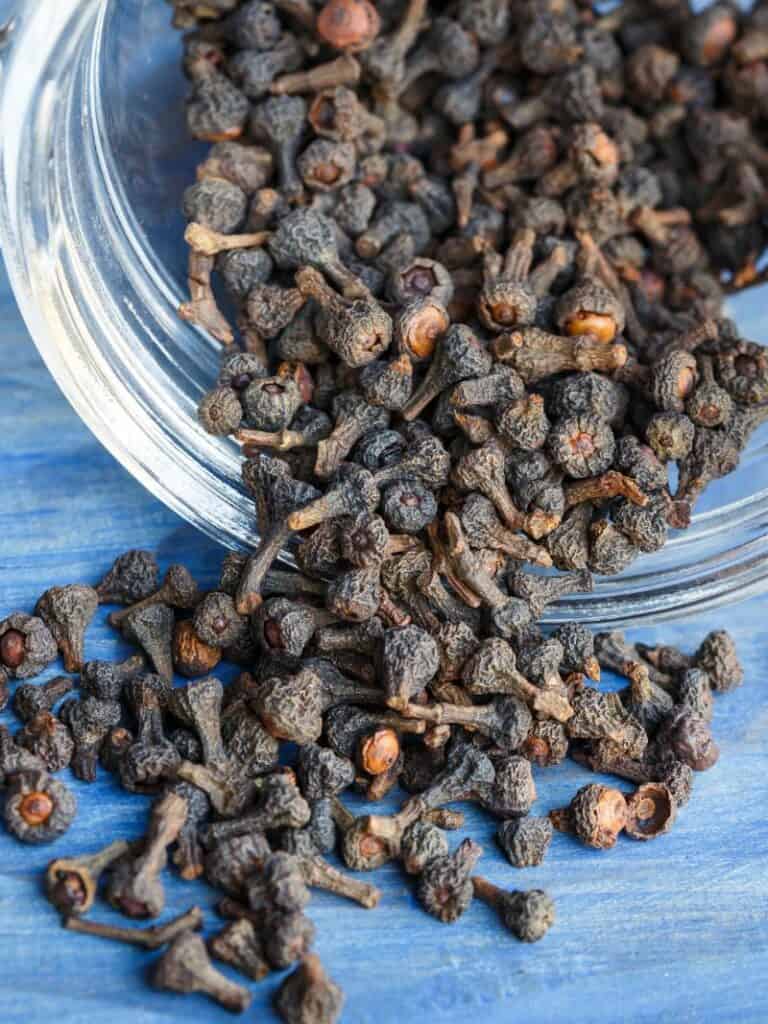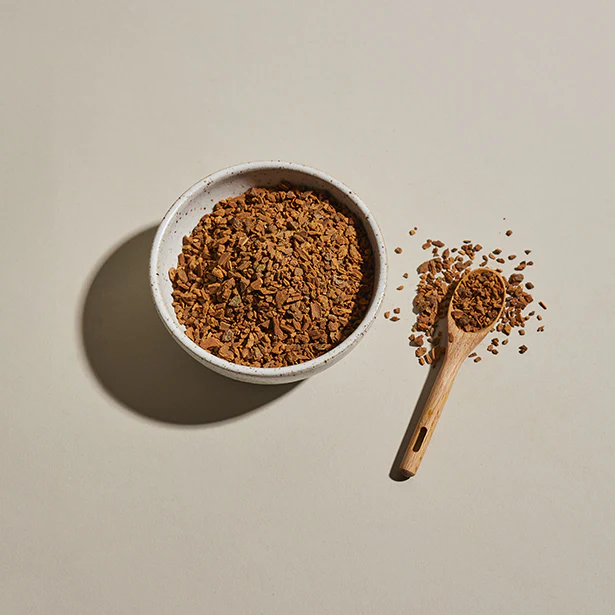Are you the type of person who gets bored with regular ol’ cinnamon? If so, then you need to try cassia bark!
It’s like a spicier, sweeter version of the classic cinnamon
But what is cassia bark exactly? And how do you use it in all your favorite recipes? Get ready to blow your mind because we’ll tell you about Cassia Bark.
We’ll explain its flavor profile, where to buy it, and even some fantastic health benefits.
Plus, if you want to switch things up from time to time, plenty of cassia bark substitutes are at hand — so no worries!
Whether you’re inspired by cooking shows or love coming up with creative dishes for game night, one thing holds – adding a little
So let’s jump into it and explore everything about this delicious cinnamony
What Is Cassia Bark, And How Is It Different From Cinnamon?

If you love cinnamon, then you’ve got to try cassia bark. Native to Sri Lanka, its flavor is quite similar to cinnamon’s, but it is spicier and more pungent, with a thicker and, some say more flavorful texture.
Cassia bark is the thick, reddish-brown or gray bark from a type of tree that produces yellow flowers and a brown, immature fruit held in a cuplike, thorny, wrinkled, grayish-brown calyx.
While cassia has a Sweet but too much peppery flavor than Ceylon cinnamon, whose taste is warm and sweet, like an aromatic gentle hug.
Those intrigued by cassia should try it as it’s great in both savory and sweet dishes.
It goes well with barbecued pork ribs, chili recipes, beef stews, vegetable medleys, and sweet dishes such as sticky buns, muffins, and pies.
If you’re feeling adventurous why not make your own herbal tea mix with chamomile flowers and cassia buds for an intense yet stress-relieving afternoon cup?
In any case, whether you use cassia in meals or for beverages you’ll be able to tell the difference between this form of pre-ground cinnamon because it imparts a unique flavor profile with hints of citrusy overtones – just ask anyone who’s tried it!
Is Cassia Bark Difference From Cassia Buds?

Yes, cassia bark is different from cassia buds.
Cassia bark is a type of cinnamon that comes from the cassia tree. It is a thick, reddish-brown bark harvested in long strips and used as a
Cassia bark has a strong, sweet flavor and is often used in savory dishes, as well as in desserts.
On the other hand, cassia buds are the unopened flowers of the cassia tree. They are small, dark brown buds with a slightly milder flavor than cassia bark.
Cassia buds are often used in pickling, and they can also be ground into a powder and used as a
While cassia bark and cassia buds come from the same tree, they have different flavors and are used in different ways in cooking and baking.
So, if a recipe calls for one or the other, using the correct ingredient is essential to achieve the desired flavor and texture.
Flavor Profile Of Cassia Bark: Sweet, Warm, And Aromatic
If you want something to
This cinnamon-like
The texture of Cassia bark is also thicker and less delicate, making it ideal for sprinkling over words such as oatmeal or yogurt.
Don’t let its intensity scare you away; this lovely
If you aren’t a fan of cinnamon’s sweet taste, don’t worry – the pungent taste of Cassia Bark makes it perfect for those who want something bolder.
Health Benefits Of Cassia Bark
Cassia bark has been long recognized as a natural source of many nutrients, such as fiber, manganese, calcium, and more.
Adding it to your routine can come with an extensive list of benefits – better blood sugar control, improved oral hygiene, enhanced heart health, and reduced inflammation.
Don’t let these possible health benefits worry you – when taken by mouth, Cassia bark is commonly consumed in foods and is likely safe when used as medicine – but in moderation.
According to the research, 1-2 grams daily have been used safely for up to three months.
If you’re looking for a different flavor experience, Cylon cinnamon is softer and flakier in texture and has a much milder flavor than Cassia bark.
Culinary Uses For Cassia Bark
It can be used in sweet or savory recipes like soups, baked goods, and curries.
Its intense flavor also pairs well with spices like nutmeg, clove, and ginger for a culinary adventure.
Cassia bark chips are also used as an attractive edible garnish to top off drinks and cocktails.
Here are some examples of savory dishes that feature cassia bark:
Chinese Braised Pork Belly (Hong Shao Rou)

This classic Chinese dish features pork belly slow-cooked in a savory and slightly sweet sauce that includes soy sauce, sugar, rice wine, and cassia bark.
Indian Biryani

This famous rice dish is made with aromatic spices, including cassia bark, and often features meat or vegetables.
Vietnamese Pho

This fragrant noodle soup is made with a complex broth that includes cassia bark, star anise, other spices, meat or tofu, vegetables, and herbs.
Indonesian Beef Rendang

This spicy and flavorful beef curry is made with a paste of aromatic spices, including cassia bark, that is slow-cooked with beef and coconut milk until tender.
Taiwanese Three Cup Chicken (San Bei Ji)

This dish is made with chicken that is braised in a sauce made from soy sauce, rice wine, sesame oil, garlic, ginger, and cassia bark.
Moroccan Tagine

This slow-cooked stew features a variety of spices, including cassia bark, meat, vegetables, and dried fruit.
These are just a few examples of the many savory dishes that feature cassia bark. Its warm, sweet flavor and aroma can add depth and complexity to many different types of cuisine.
Where to buy Cassia Bark?
Cassia bark is a
When purchasing cassia bark, look for high-quality, fresh bark free from mold or damage.
The
Spicy and sweet, this cinnamon is our most popular varietal.
Its high volatile oil content of more than 5%, which is rare for cinnamon, makes the bark extremely potent.
The best cassia bark is harvested near the base of mature trees.
This cracked version is ideal for mulling cider or wine or steeping with ground coffee.
Cassia Bark Substitutes
If you don’t have cassia bark on hand or want to try a different
Here are some options:
Cinnamon
Cinnamon is a close substitute for cassia bark and is often used in place of cassia bark in baking and cooking.
However, remember that cinnamon has a slightly sweeter and more delicate flavor than cassia bark. You may need to adjust the amount used in a recipe to achieve the desired taste.
Allspice
Allspice is made from the dried berries of the Pimenta dioica plant and has a warm, slightly spicy flavor with notes of clove, cinnamon, and nutmeg.
It can be used as a substitute for cassia bark in savory dishes and baked goods.
Nutmeg
Nutmeg is a
Cloves
Cloves are a
They can be used as a substitute for cassia bark in savory dishes and baked goods.
Ginger
Ginger is a root that has a warm, spicy flavor with a slight sweetness.
It can be used as a substitute for cassia bark in savory dishes and baked goods, especially with other spices.
These substitutes can be used instead of cassia bark in many different dishes, but remember that the flavor may be slightly different depending on which replacement is used.
It’s best to use the






